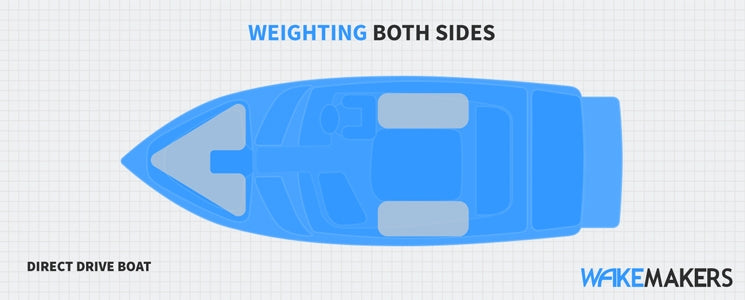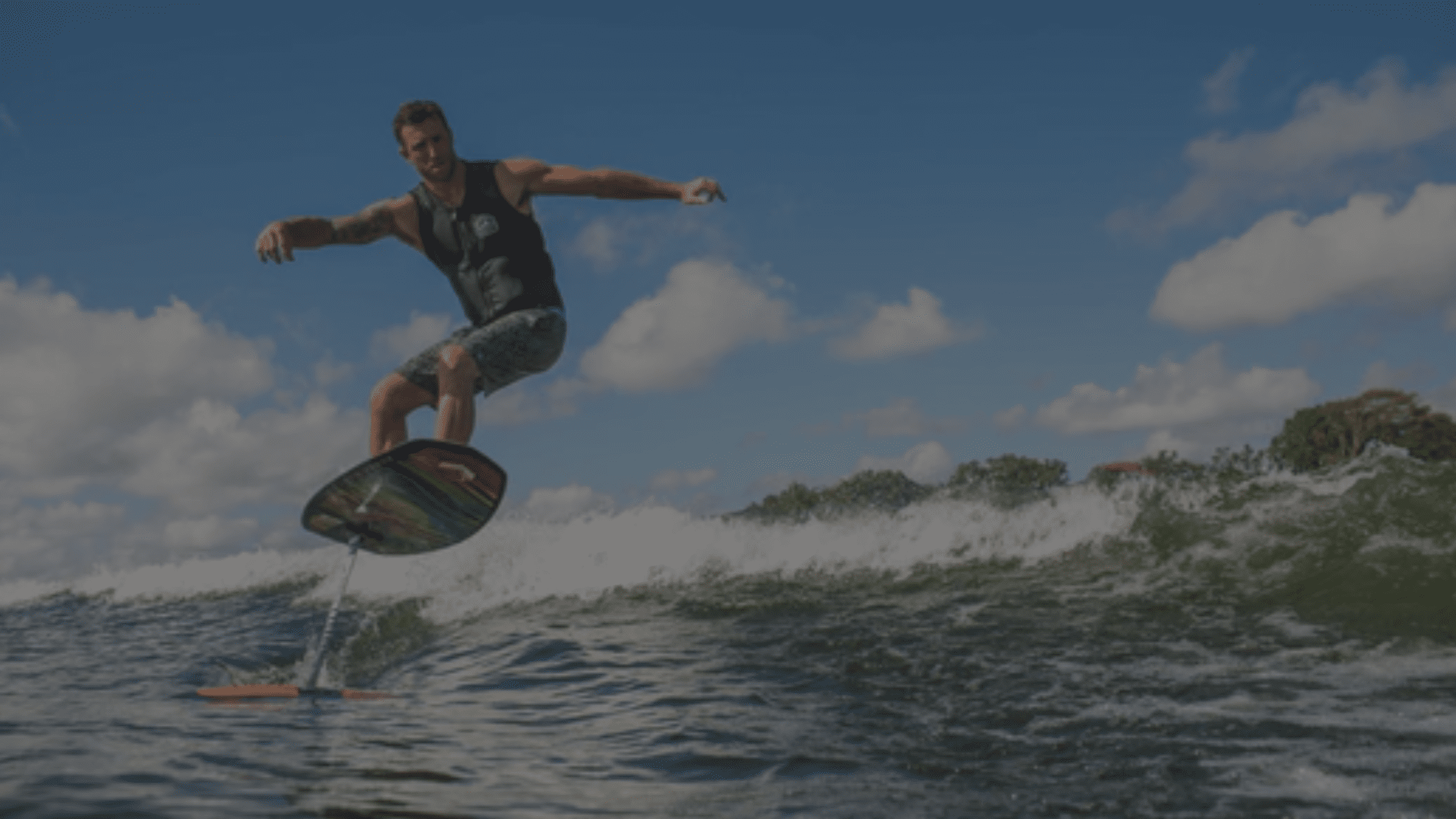
How to Build the Perfect Wakesurf Wake: Ballast Setup, Boat Type & Pro Tips
Wakesurfing has gone from a niche hobby to the main event on the water. These days, it’s often more popular than wakeboarding or waterskiing, especially with families and riders of all skill levels. But with the boom in popularity comes a flood of conflicting advice on how to dial in the perfect surf wave. To cut through the noise and help you get the most out of your time on the water, we’ve put together this straightforward guide to building a better surf wake behind your boat.
Why Your Surf Wave Matters
A good surf wave can make or break your session. The right wake lets beginners learn faster and gives experienced riders the clean, powerful wave they need to push their tricks. Shape, size, and consistency all matter. Whether you're chasing a mellow wave or something steep and punchy, it starts with understanding your boat.
The Physics Behind Wakesurf Boats

Before we get into setup, let’s look at the basics. When your boat sits in water, it displaces water equal to its weight. The heavier it is, the lower it sits, and the more water it displaces. When the boat moves forward, water rushes back to fill that space—this creates the wake.
To build a better wakesurf wave, you need to increase the displacement by adding weight. Most wakeboard boats include a factory ballast system, but these are often too small to create the size and shape needed for serious wakesurfing. That’s where aftermarket ballast comes in.
V-Drive vs. Direct Drive Inboard Engines: Does It Matter for Wakesurfing?
Your boat’s engine layout plays a big role in how the wake forms. Most modern wakesurf boats use V-drive inboard engines because they place more weight at the rear of the boat, naturally helping to build a taller, steeper wake. In contrast, direct drive boats have the engine in the center, which distributes weight more evenly and can require more ballast in the rear to create a comparable surf wave.
Ballast Configuration for Wakesurfing
Building that perfect surf wake takes more than just extra weight in your boat. Many people will just throw some more ballast bags into their boat and call it good. It is a common belief that all you need is a bigger wake in order to wakesurf. However, the shape of the wake is just as important as the size (trust us on this one).
The way ballast is distributed throughout your boat determines whether the wake is steep, long, or clean. Every hull is different, so the right setup for your friend’s boat might not work on yours. Experimentation is key.


Ballast Layout for Wakesurfing
The more weight you add to the back of the boat, the taller the wake will be in height but shorter in length. The more weight you add to the front of the boat, the lower the wake will be in height but the length will extend longer.
If you only have one or two extra ballast bags, place them in the back corner of the boat on the side that you will be surfing. This will help you get the most out of your ballast in creating a bigger wake. If you have more, add weight to the bow to clean up the wake and stretch it out. Many people suggest a 60/40 ratio for configuring the weight between the back and front of the boat. This is a loose rule but is good to generally follow while configuring your boat's ballast.
TL;DR:
-
Rear-weighted ballast creates a taller, steeper wave with less length.
-
Front-weighted ballast flattens the wake slightly but increases its length and smoothness.
If you are new to wakesurfing or setting up a ballast system for a new boat, we recommend checking out our Ballast Bag & Pump Combo Packages.
Evenly Weighting Your Boat (Newer Models and/or Surf Device)


In 2012, Malibu Boats introduced Surf Gate, a game-changer for wakesurfing. Since then, every major manufacturer has released their own surf system:
MasterCraft: Gen 2 Surf System
Nautique: NSS (Nautique Surf System)
These systems allow for even ballast distribution and make switching sides as easy as pressing a button. When using a surf system, you can fill more ballast overall, leading to a bigger and better wave.
We recommend our Factory Ballast Upgrade Kits for these boats. They integrate seamlessly with your boat's existing ballast system and allow for push button convenience.
Bring Modern Technology to Your Older Boat
Don’t have a brand new boat? No problem. Aftermarket surf systems can be retrofitted to older boats, helping you create a surfable wave without breaking the bank. This is a great way to bring modern tech to a classic ride.
Looking to add a surf system or device? Check our Buyer's Guide For Choosing a Wakeshaper - we broke down the differences between the top ones on the market. Bonus: if you've decided upon an aftermarket wakesurf system, check out the comparison between Go Surf Assist and Evolution Tabs to see the pros and cons of both.
Weighting One Side Of Your Boat (Older Models and/or No Surf Device)


If you're riding behind a boat without a surf system, you’ll need to list the boat to one side. Place the majority of your ballast on the side you’ll be surfing, and adjust as needed.
Keep in mind: most boats produce a better wave on one side due to prop rotation. Test both sides and see which gives the best shape.
People Are Ballast Too!

Passengers aren’t just there for good vibes—they’re useful weight. A full boat rides deeper, and shifting people from side to side can help fine-tune your wave.
Just remember: people can’t replace ballast bags, but they’re a helpful bonus.
Wakesurfing Tips & Safety
-
Surf in water at least 8–10 feet deep for better wave formation.
-
Always drain your ballast before trailering or lifting your boat.
-
Never exceed the Coast Guard's weight capacity.
-
Never wakesurf behind an outboard or stern drive boat.
-
Always have a spotter on board watching the rider.
FAQs
Q: How much ballast do I need for wakesurfing?
A: Start with a 60/40 rear-to-front ratio and adjust based on your boat’s shape and weight capacity.
Q: Can I wakesurf behind any boat?
A: Only behind inboard boats (V-drive or direct drive) with the propeller located under the hull. Never surf behind outboards.
Q: What makes a good wakesurf wave?
A: Height, length, and shape. Dial these in with smart ballast placement and proper speed.
Ready to Build a Better Wake?
WakeMAKERS has everything you need to dial in your surf wave—from ballast bag kits to surf systems that upgrade your older boat. Shop Ballast Solutions →





Post Comments
0 Item(s)